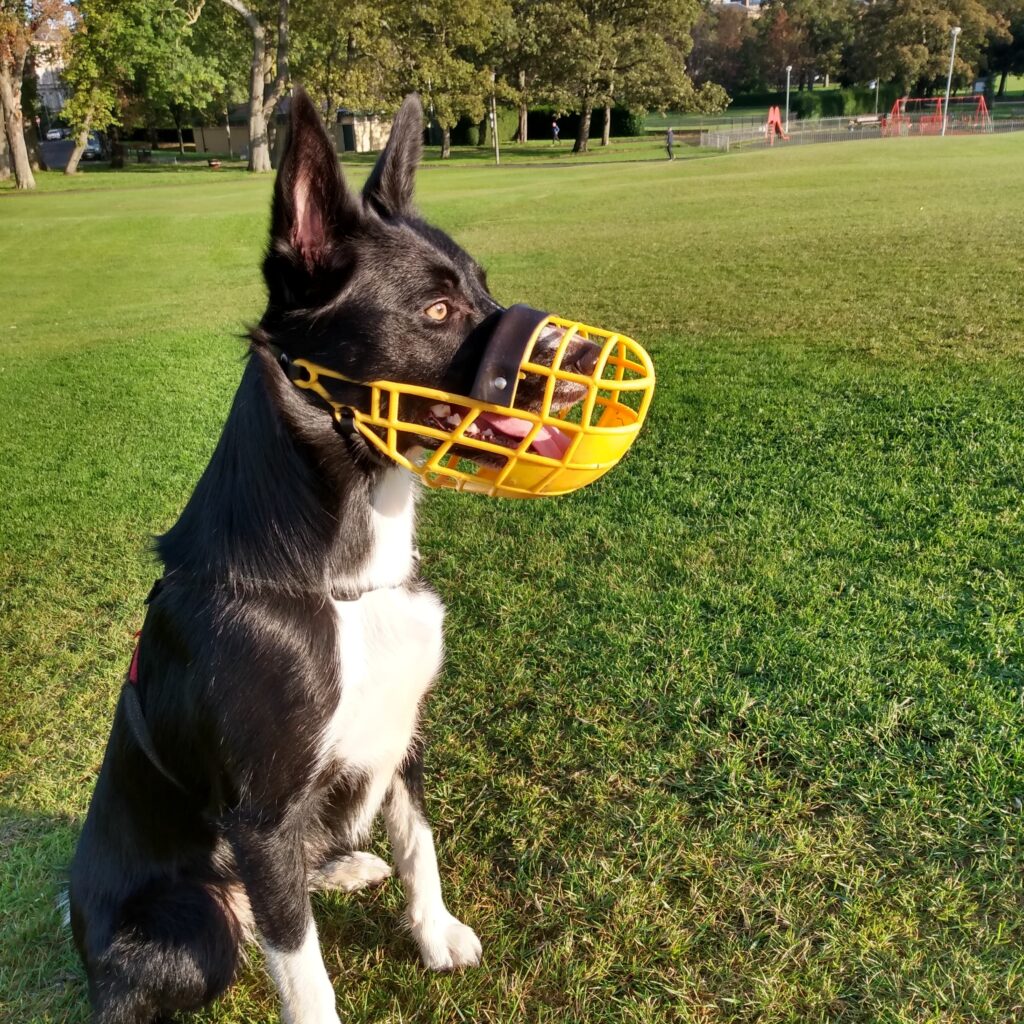Rethinking Muzzles
Gaining a Deeper Understanding of a Beneficial Tool
Muzzles have a bad reputation, and we totally get it. After all, the whole point of a muzzle is to keep a dog from biting. However, that’s also what makes it such a valuable tool for all dogs, whether they have a bite history or not.
Why Dogs Bite
Dogs can bite for many reasons. For example, it’s common for dogs to bite in response to when startled, frustrated, or afraid. However, it’s also common for animals to bite when they’re injured, sick, or pain – situations that can be very scary, stressful, or overwhelming for them, especially when they’re a medical emergency.
Because of all these reasons, you can help your dog by training them to use a muzzle, even if they don’t have a bite history. That way, they will feel comfortable wearing one if any of these situations arise.
Demystifying Muzzles
Contrary to popular belief, a muzzle doesn’t prevent a dog from opening their mouth. Instead, a dog can still drink, pant, and breathe while wearing a properly fitted device. Plus, there are also several options to ensure a perfect, comfortable fit for every type of snout. Two of the most common are basket and soft.

Basket muzzles
These muzzles look like their namesake: a basket. They come in a variety of materials, from rubber or plastic to leather or wire to create an open, breathable “basket” that sits around your dog’s snout. You can buy basket muzzles off the rack or have them custom-made to fit your dog.
Dogs can easily eat, drink, and pant when wearing basket muzzles and many even have enough space to provide treats. The open, breathable fit of these muzzles make them the more preferred option.
Soft muzzles
As you can imagine, a soft muzzle comes in fabric that wraps around your dog’s snout. Since this design restricts how much they can open and close their mouth, they are less ideal because they can interfere with panting, drinking, eating, and barking. They’re also more difficult to use while training because it’s harder to “treat” your dog.
Once you decide on the best type of muzzle for your dog, take care to find the perfect fit – even flat-faced dogs like Pugs can comfortably wear a muzzle.
Adding a Muzzle to Your First-Aid Kit
The last thing you want to do is create more stress in an already stressful situation. Therefore, it’s helpful to teach your dog to wear a muzzle when they don’t need one. And, like any training activity, it takes time.
Over several days, go through the following steps:
- Let the sniff it and offer a treat. Repeat several times.
- Touch their nose with the muzzle and treat. Repeat until they seem to think the muzzle is “good” interesting, not scary or bad.
- Hold the muzzle in one hand and a treat in the other so they have to put their nose inside to retrieve it. Repeat until your dog easily performs this step.
- Gently slip the muzzle on their nose, treat, and remove the muzzle immediately. Repeat several times.
- Put the muzzle on, fasten it, and treat. Remove immediately. Repeat several times.
- Slip the muzzle on, fasten it, and count to five slowly. Treat and remove the muzzle.
- Continue repeating step six, slowly increasing the amount of time you leave it on while holding their collar and giving treats.
For more tips on introducing your dog to a muzzle, we recommend this detailed training guide with photos from the late Dr. Sophia Yin.
By teaching your dog to accept wearing a muzzle, you can rest easy knowing they don’t experience additional stress if a situation arises where it’s safest for them to wear one.

